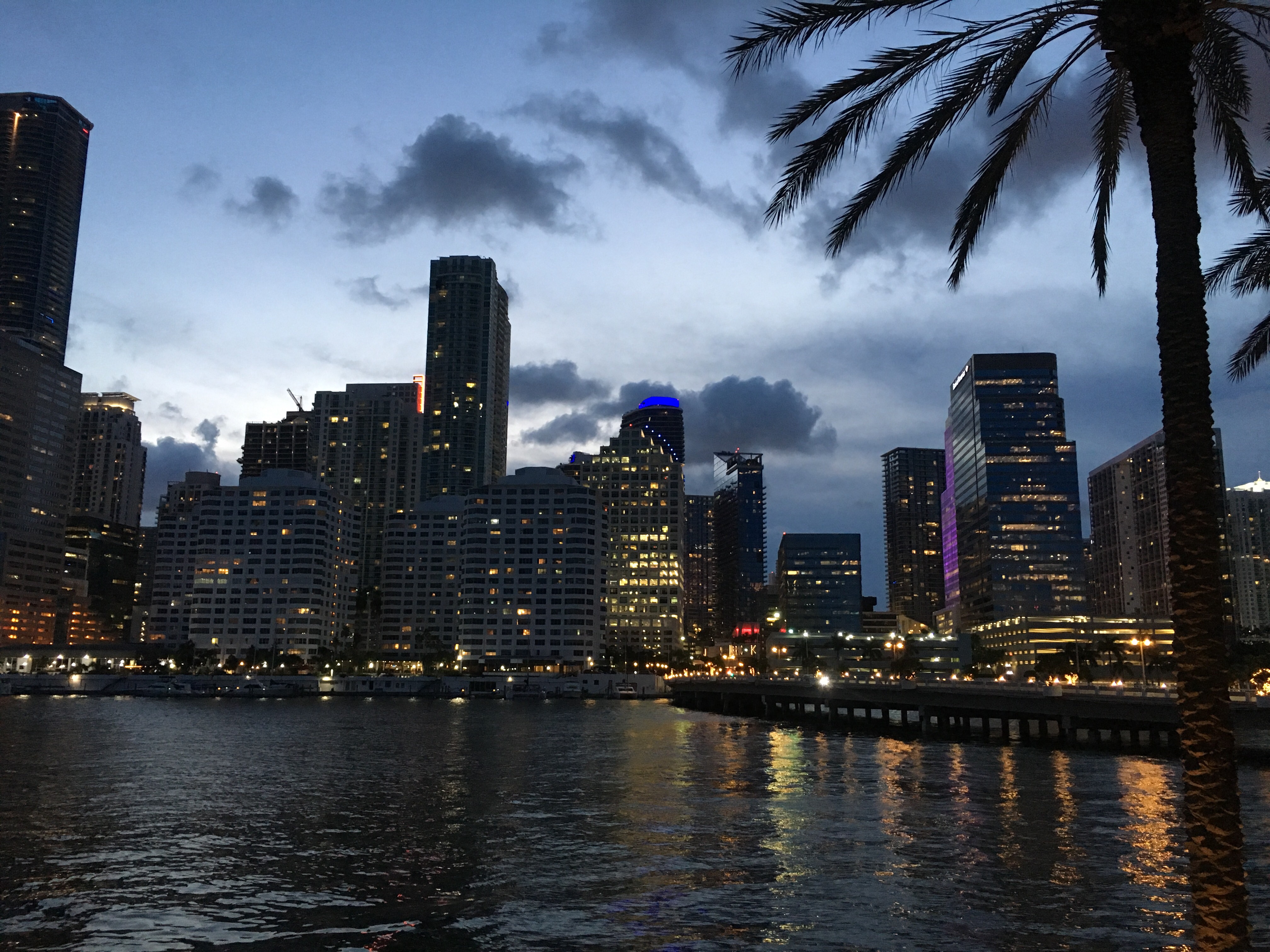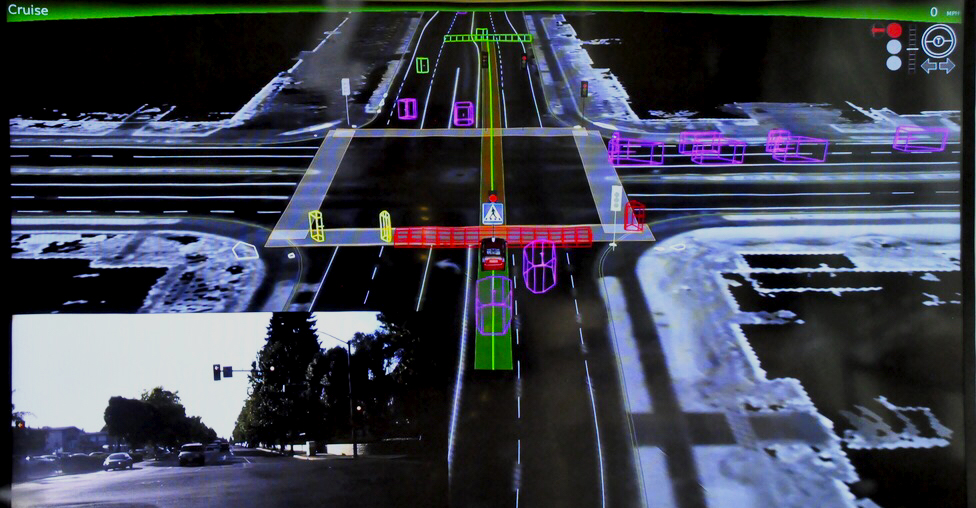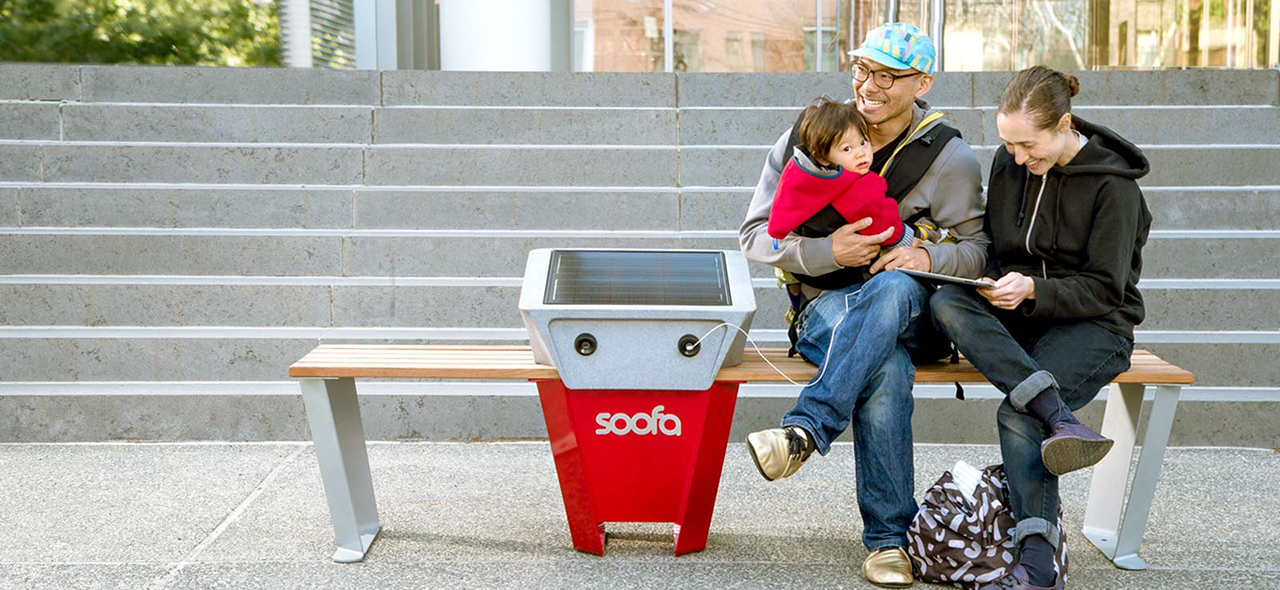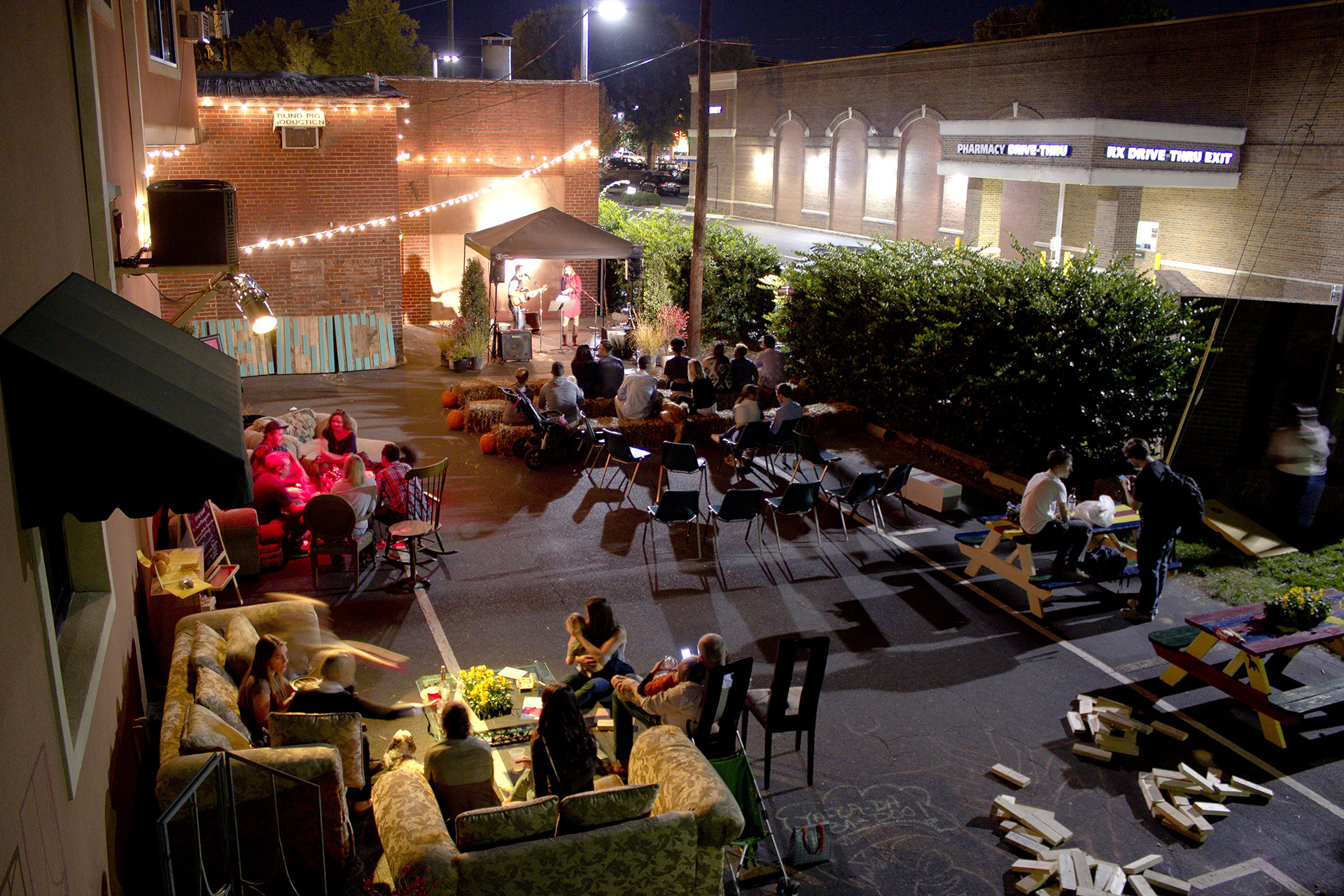To create more opportunities for civic and diverse leaders to engage with resources online and in person in downtown St. Paul.
Program Area: Community Impact
Over the last five years, Knight Foundation has proudly supported the creatives, entrepreneurs and changemakers who are shaping Miami’s future. We have sought to amplify key trends, supporting innovators in transforming ideas into ventures. Our goal throughout has been to foster a startup culture, open to the broader community, to establish Miami as a place where ideas are built and scaled.
Rather than providing funding to companies directly, Knight’s more than $25 million in investments have helped build an ecosystem in Miami, focusing on three pillars:
- Connecting entrepreneurs at all levels.
- Attracting capital and investment.
- Building Miami’s talent base.
Some of our key investments have seen much success. They represent different building blocks in this journey: places to connect and build ideas, such as The LAB Miami; major events, including eMerge Americas and Black Tech Week; mentorship and funding opportunities, such as Endeavor Miami and Miami Angels; and entrepreneurship education programs that help to close the opportunity gap, including LaunchCode, Girls Who Code, Babson College’s Women Innovating Now Lab, CodeFever and Network for Teaching Entrepreneurship. Taking the time to learn from the investments that did not meet intended goals is as important as celebrating successes. At Knight, we recognize that the keenest insights are often gleaned from missteps and failures.
We’re proud to be a part of what the Miami community has accomplished in such a small window of time. Miami’s innovation economy is growing, and each week we welcome an increasing number of amazing people to our city. Yet much remains to be achieved.
In a spirit of continuous learning, we want to hear from you – those building the future Miami – about what it will take to succeed. Where do the greatest untapped opportunities exist to enable Miami’s entrepreneurial ecosystem to grow stronger? What obstacles may arise? Where has progress been too stubborn and slow?
I’ve had the pleasure of meeting with many Miami community members at events earlier this year and look forward to continuing this important conversation.
If you have ideas, concerns or questions, please share them with me at [email protected].
Raul Moas is Miami program director at Knight Foundation. You can reach him at [email protected]; his Twitter is @rmoas.
*This post was updated on May 24, 2018 to remove past events.
-
Community Impact / Article
-
Community Impact / Press Release
-
Community Impact / Article
To support a reorientation of San Jose City Hall towards residents through increased responsiveness, user-friendly design, and customized digital experiences.
To support the Knight Niantic Advised Fund to create a Fellows Program in three to five U.S. cities, in partnership with Niantic, Inc, that builds on the success of a pilot using Pokemon Go to drive greater engagement in the public realm, by supporting local leaders in designing community-based technology solutions using augmented reality (AR).
Technology is changing cities as we know them. From sensors that track pedestrians and control street lights, to the ways local governments deliver information, digital innovation affects how city residents experience everyday life and get and share information.
At Knight Foundation, we believe that informed and engaged communities are essential to a healthy democracy. Our founders, Jack and Jim Knight, were known for their commitment to this guiding principle and their openness to evolving technology.
With this in mind, we are increasingly focused on the exponential growth of digital technology in communities. It seems everywhere we turn, we see references to “Smart Cities.” This term can mean different things to different people, but all agree that Smart Cities enable technology to help shape how a city is governed and how residents interact with each other and their elected leaders.
At Knight, we’re exploring how best to harness the growth of digital technology to improve how communities respond, connect to and engage with residents.
And one opportunity we see beginning to emerge is how to bring residents back to the center of Smart City building. We believe the Smart City should be driven by—and serve—the people who live in a place.
For the past several months, we’ve spent time in the communities where we invest asking about how they are responding to the opportunities and challenges new technology presents. Some key issues have been raised time and again. They are:
- Low levels of public awareness for the value of Smart City solutions and engagement in shaping these decisions.
- A scarcity of sustainable financing models for Smart City investments that could help cities move beyond pilots to large scale implementation.
- A lack of national technology standards and practices that cities can adopt, and limited models to enable collaboration.
We are beginning to see ways to address these roadblocks that take advantage of technology. While industry grows and investments skyrocket, and government and elected officials commit to building more connected cities, residents – the people who these cities are for – are being left out of the conversation.
Now it is time to fill the gap by focusing the Smart City discussion on the resident, and raising awareness about the value of technology within a community. To do this, here are some key questions we’re exploring :
- How can we use more real-time, crowd-sourced data to drive decision-making and shape placemaking and innovation?
- How can technology enable deeper resident participation in local government, including program planning, design and delivery?
- To what extent can technology solutions empower residents to make decisions through greater access to information, positioning them not just as creators of data but as active consumers?
- Where are we missing national standards and best practices that support Smart Cities by and for residents?
We want to work with others to identify an approach that seeks to empower individuals in our communities and influence government and industry. Because we know that when residents lead, the demand for government innovation has a greater likelihood of being met. And, when all consumers get to express their preferences, industry is more likely to meet their demand.
Across the communities where Knight invests, the potential to do more by bridging the gaps between government, technologists and residents is unlimited. Through our investments we will seek to learn, encourage and shape demand for solutions that amplify the voices and influence of all residents as the spark for the innovative cities of tomorrow.
Lilian Coral is Knight Foundation director for national strategy. Email her at [email protected] and follow her on Twitter @lcoral.
-
Community Impact / Press Release
-
Community Impact / Article
-
Community Impact / Press Release
-
Technology / Article
-
Community Impact / Article
-
Community Impact / Press Release
-
Technology / Article
To engage Miami residents in creating new approaches to address pressing urban issues—including affordable housing, transportation and sea level rise—Knight Foundation has announced $1 million in support to the Harvard University Graduate School of Design. With the funding, the school will embed urban researchers in Miami and Miami Beach to better understand the cities’ opportunities and challenges, and launch a multi-year study toward building solutions shaped by residents.

Over the past seMohsen Mostafavi, Harvard University Graduate School of Designveral years, the Harvard University Graduate School of Design (GSD) has engaged with the communities of Miami and Miami Beach to think holistically about their futures as cities. Together, they represent one of the world’s most remarkable cultural and urban landscapes, and we as designers have a responsibility to understand and help ensure its continued vitality. Toward that end, our design faculty have led a series of courses focused on the variety of challenges facing South Florida, and we have convened community and civic leaders to articulate the role of design in ensuring a resilient future for the region and its residents. Building on this work and our momentum, we are very pleased to launch an expanded multi-year study on the Miami region, supported by the Knight Foundation.
As part of this project, we will embed faculty experts and urban researchers in the area to work alongside community leaders and local stakeholders on producing a set of actionable, design-based recommendations. Bringing to bear the cross-disciplinary approach we teach and are continuously working to advance at the GSD, we will work across multiple fields of knowledge and research to develop a set of toolkits, white papers, and other materials for use by community leaders, many of whom will be involved throughout the study. Our aim is that our research and the recommendations it yields are rigorous yet grounded, and that our findings stimulate conversations among decision-makers at all levels across the U.S. on the future of the American city.
In that way, this work serves as the first phase of a new initiative at the GSD we are calling the Future of the American City, which will also include Boston, Detroit and Los Angeles. Collectively, these city-based projects and the initiative overall represent a continuation of the GSD’s history of leadership in applied, project-based design research, and they reaffirm the School’s and the Knight Foundation’s commitment to developing ethical, humanizing approaches to the design of cities.
In Miami, the focus of our new research will include three themes, which we identified together in conversation with community civic stakeholders: urban mobility, affordability and climate change. My colleagues Charles Waldheim, John E. Irving Professor of Landscape Architecture, and Jesse M. Keenan, Lecturer in Architecture, will join me in leading the study.
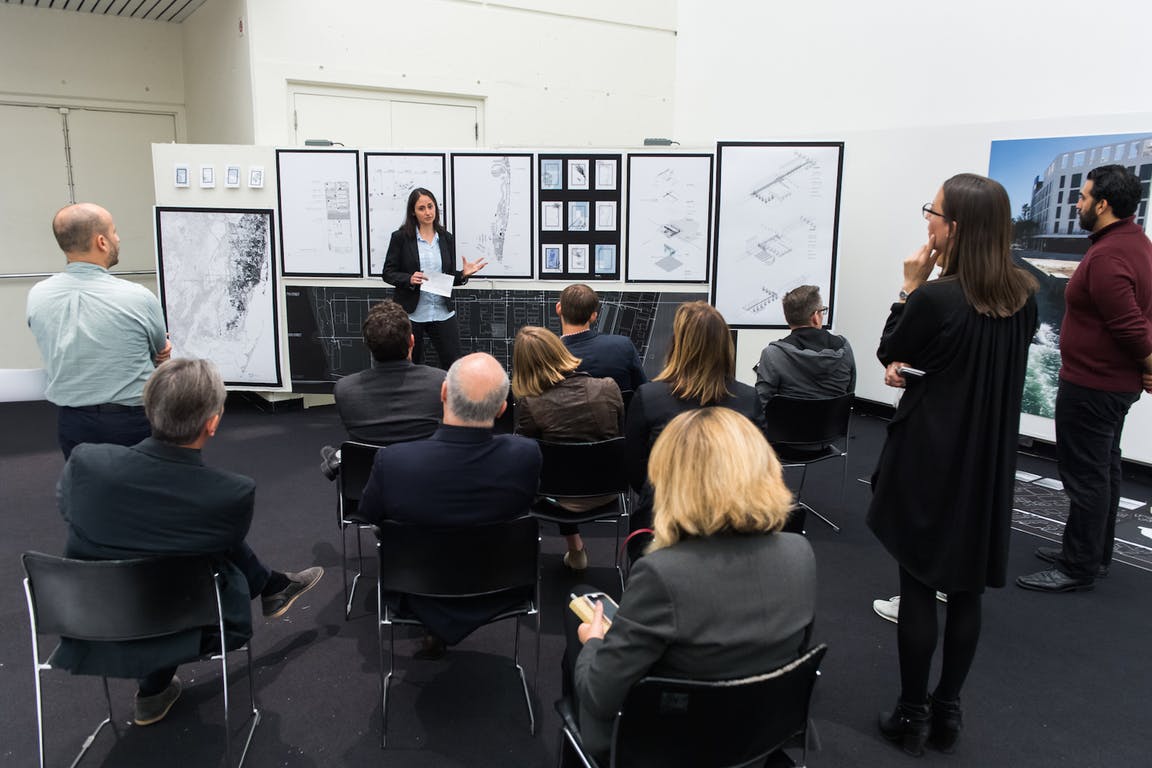
As part of this research, participating GSD faculty will organize three design studios through three courses, one offered each fall semester. Consisting of 12 graduate students and a professor, each studio will conduct independent research together in conversation with leaders in the field. These groups will spend at least a week on the ground in Miami speaking to residents, civic organizations, politicians and others. This model of studio-based, design-driven research is fundamental to the GSD’s core pedagogy, and we believe the intensive, iterative and collaborative nature of this process ultimately works to collapse the distance between theory and impact.
While this next phase of research represents a formal culmination of our institutional commitment to studying and engaging with South Florida’s built environment, we seek to establish a platform for those who envision a path forward for a more inclusive, livable and affordable Miami. In that regard, we are very excited to be partnering with Knight Foundation on this project. Their commitment to strengthening communities across the United States through increased engagement and economic opportunity is important work that aligns with the GSD’s pursuit of a more beautiful, coherent and equitable world. We hope that our work in Miami is a first step toward developing a national discourse on the future of cities and urban life across America.
Miami, FL (March 20, 2018)—To engage Miami residents in creating new approaches to address pressing urban issues—including affordable housing, transportation and sea level rise—the John S. and James L. Knight Foundation today announced $1 million in support to the Harvard University Graduate School of Design. With the funding, the school will embed urban researchers in Miami and Miami Beach to better understand the cities’ opportunities and challenges, and launch a multi-year study toward building solutions shaped by residents.
“Miami is at the leading-edge of the most vexing challenges that will face major cities around the world in the decades to come. We’re excited to welcome a world-class group of problem-solvers to Miami to partner with leaders and innovators who are already working on these important issues,” said Sam Gill, Knight Foundation vice president for communities and impact.
Part of its Future of the American City effort, which aims to help cities tackle sustainability and resiliency challenges, the Harvard Graduate School of Design study will span the next three years, beginning this spring. Building on the school’s unique, multi-disciplinary model, the effort will use architecture, landscape architecture and urban planning and design, to come up with actionable, efficient solutions that take into account community needs.
“The Harvard Graduate School of Design is eager to partner with Miami and Miami Beach and to bring the school’s design expertise to bear on a set of complex issues affecting nearly everyone living in those communities on a daily basis,” said Mohsen Mostafavi, dean and the Alexander and Victoria Wiley professor of design at Harvard Graduate School of Design. “In employing the model of the School’s design studios, our goal is to work across multiple fields of knowledge and research and develop a set of actionable, design-based recommendations to share with city and community leaders.”
The Harvard Graduate School of Design is consistently ranked as one of the leading design schools in the world. It has led projects to strengthen and revitalize cities around the globe. These include helping cities implement transportation policies; adapt to sea level rise and develop more resilient models of growth; and design urban environments that support the health and well-being of residents. Its alumni include Philip Johnson, I. M. Pei and Paul Rudolph.
The school’s researchers have been actively connected with the City of Miami and City of Miami Beach for several years. Since 2012, the school has conducted six courses focused on Miami and conducted several major events in the city. Expanding on this work, the school will convene a range of experts, policy-makers and members of the public to contribute to this new effort.
In its research, the school will focus on urban mobility, affordability and climate change, themes that emerged from a series of previous discussions among its researchers and members of the Miami and Miami Beach communities. Following their analysis, students and faculty will offer toolkits, white papers and other materials for review and use by city managers, mayors and other civic leaders, many of whom will be directly involved throughout the study.
“This effort will bring a new community of problem-solvers to Miami, while calling on Miami leaders and innovators to creatively engage around some of our most pressing challenges. At the same time, lessons learned through the experience can be shared with cities across the nation facing similar challenges,” said Sam Gill, Knight Foundation vice president for community and impact.
The research will be led by Mostafavi as well as Harvard Graduate School of Design professors Charles Waldheim, John E. Irving Professor of Landscape Architecture and Jesse M. Keenan, Lecturer in Architecture. The study will include a three-part series of courses being led at the school. This fall, a course will focus on mobility and transit in Miami, particularly Brickell, with a site visit in October 2018. A second course in Fall 2019 will examine the roles of higher education and medical institutions in Miami’s economy, and a third in Fall 2020 will focus on the roles of Miami’s various ethnic neighborhoods in shaping the city’s cultural identity.
Each Harvard Graduate School of Design course will involve 12 graduate-level Harvard students and a professor working in a “design studio,” which involves conducting independent research, then discussing plans with fellow researchers to modify and strengthen their proposals. Each team of students will spend at least one week in Miami to speak with local stakeholders, civic organizations and political and administrative leaders. Representatives from Miami’s civic and political organizations will provide feedback throughout the study.
Harvard Graduate School of Design’s upcoming Miami research is the first phase of its Future of the American City project, a broader urban-study initiative intending to also examine the cities of Los Angeles, Detroit, and Boston. The school plans to host a summit to convene experts from each city to create a national discourse on the future of cities and urban life in America.
Knight Foundation supports informed and engaged communities by identifying and working with partners to help our cities attract and nurture talent, promote economic opportunity and foster civic engagement. This effort will advance Knight Foundation’s work in Miami focused on building the city’s innovation ecosystem, while fueling entrepreneurship and new ideas. It will also help drive a national conversation about how communities can be more engaged in designing their cities to face the challenges of the future.
About the John S. and James L. Knight Foundation
Knight Foundation is a national foundation with strong local roots. We invest in journalism, in the arts, and in the success of cities where brothers John S. and James L. Knight once published newspapers. Our goal is to foster informed and engaged communities, which we believe are essential for a healthy democracy. For more, visit knightfoundation.org.
About the Harvard University Graduate School of Design
The Harvard University Graduate School of Design is dedicated to the education and development of design professionals in architecture, landscape architecture, urban planning, and urban design. With a commitment to design excellence that demands the skillful manipulation of form and technology and draws inspiration from a broad range of social, environmental, and cultural issues, the Harvard Graduate School of Design provides leadership for shaping the built environment of the 21st century. For more information about the Harvard Graduate School of Design, visit gsd.harvard.edu.
Media Contacts:
Anusha Alikhan, Director of Communications, John S. and James L. Knight Foundation 305-908-2646, [email protected]
Travis Dagenais, Assistant Director of Communications, Harvard Graduate School of Design 617-496-1143, [email protected]
-
Community Impact / Article
To support talent retention and civic engagement in Detroit, in connection with other Knight cities, by renewing support for the Urban Consulate in Detroit, a center that hosts non-partisan conversations on topics of civic importance to diverse audiences
Suze Guillaume is a Miami-based social entrepreneur, author and founder of the Beyond Literacy Pop-Up Project. Below she writes about her experience with the Emerging City Champions program, which is accepting applications for its 2018 class until April 2, 2018.
The Beyond Literacy Pop-Up (B Lit Pop-Up) is the first of its kind: The pop-up book cart is a wooden library on wheels. It brings literacy to children and parents where they are, by sharing the art of language through history, culture, stories and books. The book cart features painted shelves (the artwork of 13-year-old local artist Valentina Elao González), inspirational quotes and publications by local writers, as well as a tablet for kids to read e-books. Thanks to the Emerging City Champions Program, B Lit Pop-Up has successfully brought the Miami community together to engage with diverse self-published books and local authors in public spaces.
The first unveiling of the pop-up took place at the Little Haiti Cultural Center, the central hub of Haitian art, history, and culture in Miami. From there, the book cart made seven additional stops on its debut tour of public spaces throughout the city. Wherever the pop-up went, it raised awareness of multicultural authors, artists, innovators and entrepreneurs in South Florida.
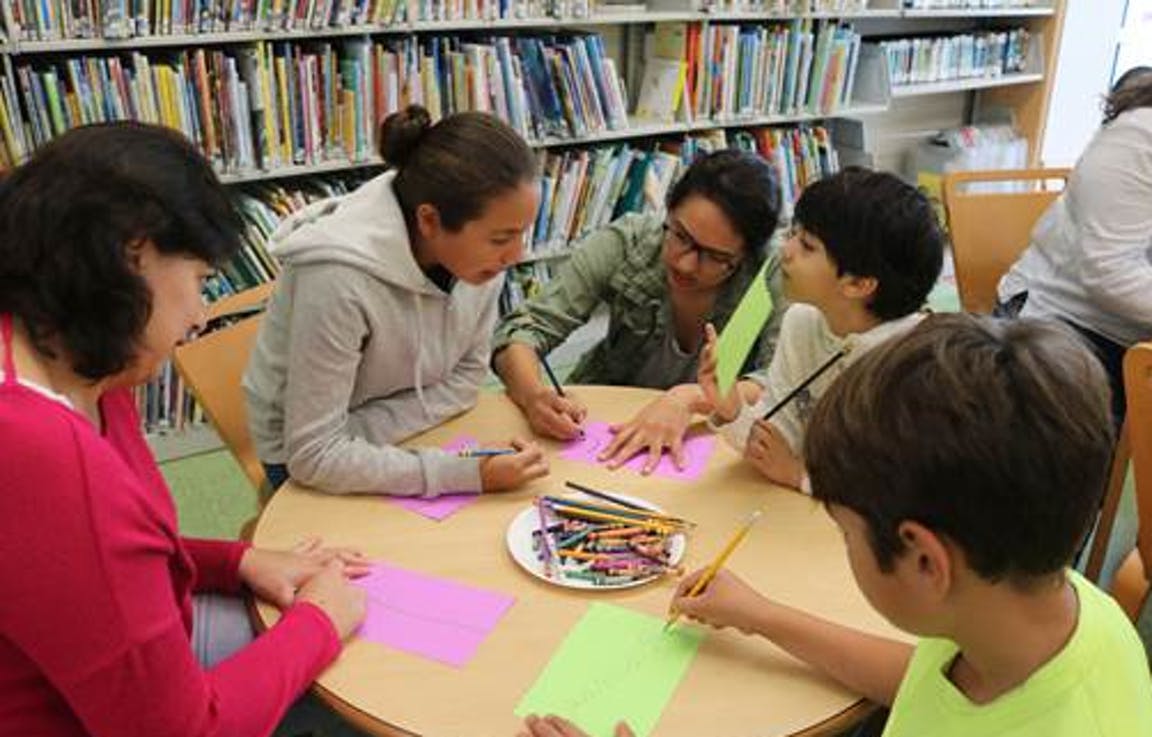
During its stop at the Arcola Lakes Branch Library, self-published authors highlighted their works, including:
- Child-author (and my son!) Edwin Bonilla, Jr. who showcased, “EJ’s Exciting Road Trip”
- Florida-based author Jennifer Pierre highlighted her book, “Jaylen and the High Five Machine,” and a doll from her diversity-focused toy company, Melanites
Attendees instantly connected with our local authors and entrepreneurs, and linking local talent with people in the community made the project even more meaningful.
The pop-up’s inaugural book tour ended in February 2018 and was a source of inspiration for celebrating diversity and Black History Month. Parents and kids gathered at the Lemon City Branch Library in the heart of Little Haiti for the closing ceremony. Local authors, volunteers, community leaders and musicians filled the room with books and instruments to celebrate literacy in a very special way.
The Emerging City Champions Program supports projects that make their cities more vibrant places to live and work, and there were countless moments during the tour that emphasized the importance of an initiative like B Lit Pop-Up. I cherished the sound of children’s voices running towards the Lemon City Library, eager to interact with the pop-up. Hearing the voice of a little girl sharing that she couldn’t read was and is the inspiration we needed to keep the project going.
We plan to continue the tour with pop-ups at libraries, parks, colleges and other public spaces, and we hope to partner with larger organizations to expand the initiative. I learned during my time as an Emerging City Champion that finding and elevating the voice of the people in your community is vital for a successful project. At its core, B Lit Pop-Up is dedicated to restoring hope in our communities. 8 80 Cities, the nonprofit that leads the Emerging City Champions program, believed in this project and did an amazing job helping me prepare and execute. When you have passion for your idea and a team of people supporting you, the possibilities are endless.
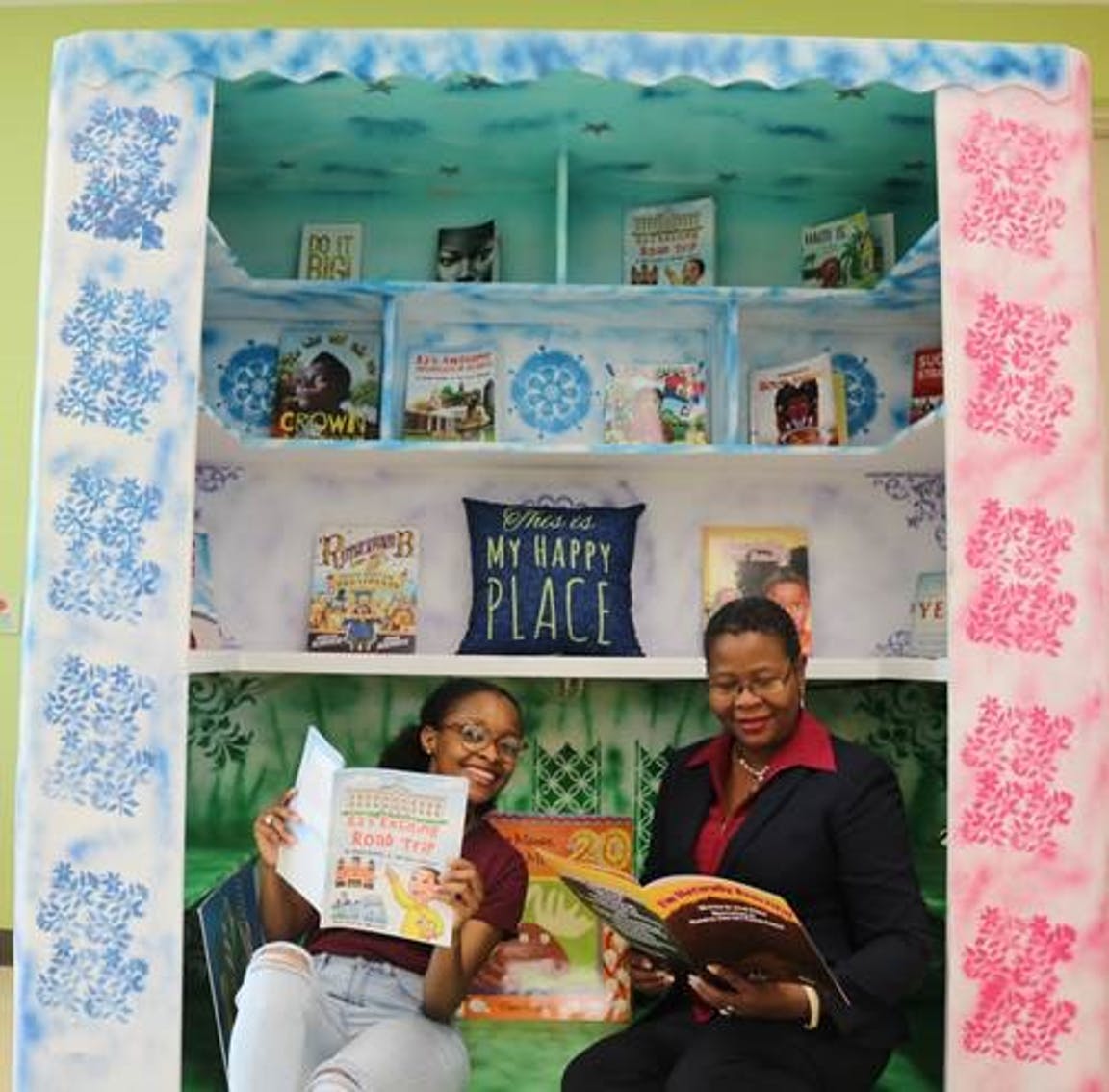
-
Community Impact / Article
-
Community Impact / Press Release
Knight Foundation President Alberto Ibargüen delivered the following opening remarks at the Knight Media Forum on February 20, 2018. The remarks have been lightly edited for publication.
Good morning, everybody. Thank you for being here and welcome to the first Knight Media Forum – the 11th Media Learning Seminar.
I hope you all enjoyed the movie “The Post” last night. I’m not Tom Hanks, and I’m not Meryl Streep, but we’ll have to make do. I really enjoyed the panel with the amazing Dana Priest from the Washington Post and University of Maryland, Jameel Jaffer, who I think is the next Floyd Abrams, and Floyd Abrams himself, who was actually one of the New York Times’ lawyers represented in the film. I asked Floyd afterwards which of the lawyers had played him and he said, “the handsome one.” And then thanks to Jennifer Preston for moderating last night – and Jennifer, thank you and thanks to Robin Reiter – the two key people – for putting all of this together.
I’m Alberto Ibargüen, and for the past dozen years, I’ve had the privilege of leading the John S. and James L. Knight Foundation, where our mission is to improve how democracy functions by supporting informed and engaged communities.
The Knight Media Forum is key to that mission. It’s an opportunity for leaders across media and philanthropy to consider the role of news and information in shaping and strengthening communities. This is the theme you’ll hear from everybody at Knight. It’s news for what purpose? For informing and engaging citizens so they are in a better community in a democracy.
These issues were very much on my mind 11 years ago in San Francisco, where I had been asked to speak to the community foundations conference convened by the Council on Foundations. The day before the conference, the San Francisco Chronicle run an op-ed by Dan Gillmor in which he argued that if the foundations at the conference really wanted to impact their communities, they should focus on the survival of local journalism.
The argument was, and is, very simple: For a democratic republic to thrive, it needs the consent of the people. To come to agreement, there has to be common ground so there can be consensus. And to reach that common ground, you need trust.
In our history, we’ve had many periods of division, starting with the very beginning, when we were hardly united in the decision to rebel against Britain.
Time and again, we’ve tested each other, distrusted each other, and then come together. But during this last decade, we have seen trust decline not only precipitously but in tandem with a dramatic drop in the production and dissemination of local news – that basic, commonplace and common-sense information that informs the middle. These are related events.
When we don’t have a neutral middle, the void is filled with opinion. Opinion, however well-intentioned, is not fact and is not whole. One day’s news does not make a full story, but a year’s worth of reliable, verified news creates a community bound together with trust and information.
The middle is the glue that makes that compromise stick. Once that’s gone, everyone is left running toward their own set of facts. That’s not a particularly significant problem for an authoritarian regime, but it is an existential threat for a democratic republic like ours.
That day 11 years ago in San Francisco, I literally scrapped my planned speech and instead channeled Dan Gillmor’s call to action. By supporting local news, Dan argued in his op-ed, community foundations could “play a vital role in ensuring that communities emerge from an inevitably messy media transition with the kind of local information sources we all need.” To predict that the transition from traditional print and broadcast to internet would be “messy” was hopeful, since it implied we’d get through it – and phenomenally understated.
For us at Knight, it was just the beginning. With many of you, we devised the Knight Community Challenge, and within six years, we had received applications from 450 of the country’s roughly 700 community foundations. We awarded 120 grants through that process.
And we started the annual Media Learning Seminar. I am pleased to say today, the Knight Media Forum has grown to attract the largest, most diverse crowd we’ve ever had. Looking around the room, I see leaders in radio and television, reporters from large and small newspapers, community leaders and digital innovators. The role of news and information in communities has become a critical theme in the work of place-based foundations around the country, and I’m especially pleased to see so many representatives, staff and board members here today from those foundations.
I shouldn’t do this, I know that – it’s dangerous in a crowd like this – but since so many of you have participated in this seminar and this movement, but I really do want to call out four foundations in particular for their commitment and partnership in the work: The Silicon Valley Community Foundation, whose president, Emmett Carson, has taken up this cause in the Valley; our own hometown Miami Foundation and Javier Soto, the president, is here; Philadelphia’s Wyncote Foundation, whose chair, David Haas, has long been a leader in funding nonprofit news and information; and the Community Foundation for Southeastern Michigan, whose president, Mariam Noland, used to be a Knight Foundation trustee, and was one of the people who moved the adoption of this new practice and policy at Knight Foundation, and has worked to ensure that Detroit never should become a news desert. Special thanks to them for their partnership.
Obviously, times have changed since that first Media Learning Seminar. Information produced or presented by Google, Facebook, Amazon, Microsoft and Apple comprises most of what we know, or think we know, as fact. Who saw that coming? Maybe one or two of you, but I didn’t. I don’t need to explain the evolution of news media to this group, but as a reminder of how fast things have changed, think about the fact that, at the first conference 11 years ago, nobody had a smart phone … because they didn’t exist. And imagine that, when we first met, we polled the audience and:
- 98% said they got their daily news from a newspaper.
- Twitter was about a year old. At the second year’s seminar, Dianne Lynch, who was then Dean of Ithaca’s Communications School, explained to the audience what their kids were doing on something called “Facebook.”
- And I don’t think we had even heard of Amy Webb, who would soon thereafter start annually amazing us with her insight on how the media world is trending.
The dawn of the internet age has presented tremendous opportunity to inform and engage the world. I am a prisoner of hope and I am a techno-optimist, but I have to admit that, so far, it has been a tough new century for trust and authenticity.
Building trust remains the fundamental challenge facing American communities. And it is arguably harder now than ever for the average citizen to separate truth from falsehood. As a result, interactions between people with different viewpoints quickly devolve into personal attacks on motives, often devoid of rational, level-headed, fact-based discussion.
It wasn’t always so. From the beginning of the republic to the latter half of the 20th century, media was local and frankly largely verifiable. The information produced overlapped with the geographic areas on top of which we built the structures of government, whether cities, counties or congressional districts. The Founders formalized the role of the press as the staging ground for the middle, a written and spoken battlefield where the wars of words are waged until common ground was reached. And that worked until national broadcasting and later internet broke the geographic tie between media outlets and the communities they served.
Eleven years ago, we could already see that that direct relationship was buckling, and common ground was beginning to recede. As local and regional news has weakened, trust has declined. Based on a Knight Foundation/Gallup poll of 20,000 respondents, which those of you who do polling know is quite a sample:
- 45% of Americans see a great deal of bias in media coverage. In 1989, that number was 25%. So that number has gone from 25% who saw a great deal of bias to 45%.
- 66% say media does not do a good job of separating fact from opinion.
- Less than half of Americans can say that they can name an objective news source. That’s a crisis of trust.
And yet 84% see media as key to our democracy. That gives me some hope. At least there’s a will to discuss how to get there.
This is a place where foundations of all sizes can make a difference. Over the next two days, you’ll hear from foundations and media organizations that are partnering to develop novel ways to report stories and engage audiences, in service of building trust. And you’ll hear from two of the people most experienced, in my view, at delivering neutral information: Tim O’Reilly, who understood the power of internet almost before everyone and who believes passionately in the possibilities of technology, and Jimmy Wales, founder of Wikipedia – one of the few places on internet that truly does live up to the ideal of what democratized access to information can be, but believes just as passionately in the engagement of humans as the decision-makers.
Many believe trust is built on performance and that accuracy in news reporting will be enough to restore trust. Perhaps. But let’s not fail to look outside of traditional news media as we examine this.
Consider, for example, why are libraries continuing to be trusted? Or why has our military gone up 30 points on a trust scale from 57% in the mid-1970s to 87% today. What are they doing?
I think our military has actually done something the media hasn’t: They have been clear about their mission and they have been focused. The mission is to protect, and they have done a brilliant job of remaining apolitical.
Thinking about those lessons – and more broadly, how the media can help strengthen and build trust in communities – is exactly why we’re here.
It’s why we at Knight funded the Knight Institute for the First Amendment at Columbia University, the digital transformation of local news organizations, dozens of digital news startups, scholars offering a wide range of views, and scores of experiments. Our latest grant in this area is to Media Impact Funders, which supports and subsidizes the engagement of community and place-based foundations in their work. Actually, I’m not sure we’ve announced that so Vince, just don’t cash the check yet. But we really can recommend their workshops, webinars and regional gatherings. If I wasn’t supposed to say that until later, I’m sorry.
And, of course, it’s in this spirit that we asked the Aspen Institute to constitute the Knight Commission on Trust, Media and Democracy. That’s a mouthful, but so is this issue. It’s ably led by co-chairs Tony Marx, president of the New York Public Library, and Jamie Woodson, a former Tennessee state senator, who now heads the state’s Collaborative on Reforming Education. Tony will actually share some of the Commission’s early findings and how they relate to today’s conference. We hope that, like the previous Knight Commission at Aspen on the Information Needs of Communities in a Democracy, the Commission on Trust, Media and Democracy will not only probe those issues, but point us in productive directions based on its recommendations.
They actually met here yesterday, and I was really thrilled to hear the range of issues they considered, in the meeting and in hallways – some very practical, some philosophical, including, and this is just from my notes:
- What can be done to make digital platform companies act more like traditional publishers assuming responsibility for the content? The corollary to that in the debate was also raised: Given their power, do we really want platform companies, with their concentration of power, to act as our editors, as our sensors, maybe making them more powerful than any ministry of information ever imagined?
- What can be learned from the Chinese system of dealing with information in the digital age? That was a question I didn’t see coming.
- Are algorithms neutral checks on the power of platforms, or are they expressions of the choices and news judgment of the programmers who wrote the code?
- If producers of news no longer control its distribution, how can they control their destiny? How can they guarantee their content?
- Is the commercial future of news viable? Should news organizations move away from advertising models to purely subscription models that can leverage the personalization power of digital technology?
- What’s the future of public and not-for-profit media?
- And of course, what’s the role of philanthropy? How can we effectively support sustainable local news operations? How do we provoke thought and ensure the whole community’s interest?
These and more points were raised and there will be more of them as you begin your own discussions. We launched this event 11 years ago because, at that time, the consensus among community foundations was that building an informed community was something separate from the work of community foundations. We sought to change that; and your presence here today is evidence of a profound shift.
I’m excited, and I’m honored to have you all in this room, bringing diverse perspectives to strengthen our understanding of how to ensure our democracy thrives. In communities large and small across the nation, our task is nothing less than to restore trust. It starts here. And it starts with you. Welcome.
Chad Rochkind is the founder of Human Scale Studio, an Emerging City Champion and a Knight Cities Challenge winner. Below he writes about his experience with the Emerging City Champions program, which is accepting applications for its 2018 class until April 2, 2018.
I still believe in hope.
I still believe that there are openings for good people to build a better future despite the daily outrages and absurdities that have become the norm of American life in 2018.
I believe tackling these issues requires us to bring truth and humanity into the room wherever we go.
I believe we need to be brave, have grit and muster the resources we need to build the kind of bright future that people don’t even know is possible.
I believe that when people come together under the banner of a common purpose, it is like oxygen for the human spirit and people gravitate toward it.
I believe all of this because I was in the first class of the Emerging City Champions program.
Emerging City Champions changed the entire trajectory of my life, while enabling me to create lasting transformation in my city. With $5,000 and training from some of the world’s greatest urban thinkers and doers, I sparked a movement that led the City of Detroit and the State of Michigan to completely rethink how the main street of Detroit’s oldest neighborhood functions.
It started with a small parklet. Armed with $5,000 from the program, I was able to work with a café owner, a local architect and a brilliant team of fabricators to create a beautiful public asset inside of a parking space. By creating an area that prioritized people rather than cars, we demonstrated that people-powered places were possible. People had never even thought of such a thing! We used the installation as an opportunity to engage the community around the kind of street they wanted to see in the future. Inside the café, we provided urban engagement tools, such as visual comparison surveys and plans that displayed different views of the street. It became clear that no one wanted a 9-lane state highway running through the heart of the neighborhood.
People were blown away by the parklet and the engagement surrounding it. It made them feel like we could change this huge chasm in the heart of our neighborhood if we worked together.

The Michigan Department of Transportation arrived to demolish the parklet 10 days after it was installed, but the idea had already pushed people to change their mindset. Leveraging that experience, I scaled up the concept and went on to win the Knight Cities Challenge, which supported 12 more installations in Detroit and deeper training for residents who wanted to be part of transforming their neighborhoods. These, combined with the introduction of Open Streets Detroit, a program that closes the streets to car traffic, let the city and state know that the people were clamoring for change.
Less than two years after the initial parklet was built, one of the longest protected bike lanes in America was installed in Detroit. It reduced the lanes devoted to car traffic, and opened up the possibility for pedestrian friendly infrastructure such as café seating and wider walking spaces.
In an era where people are fearful of change and suspicious of each other, one way to make a difference is to create a window into the world that you want. Emerging City Champions opened up that avenue for me by allowing me to test an idea, so that people could see first-hand how a small fix could make a big difference. At the same time, working alongside the community, I was able to better understand what works and what doesn’t, and adjust and scale accordingly.
This vision for inclusive urban development is exactly what the world needs at this moment in our history. And we need more people to take the baton and run with it in cities around the country.
Apply. Join the movement. Be the change.
-
Community Impact / Press Release
-
Community Impact / Article
